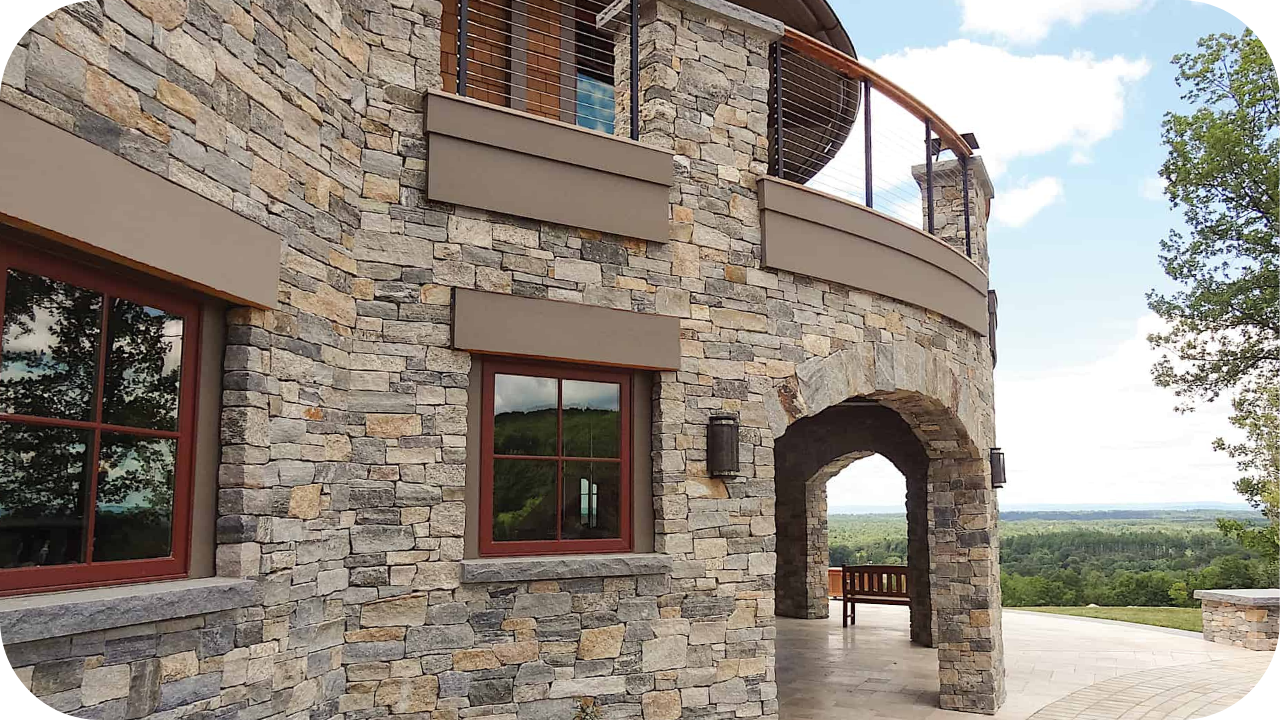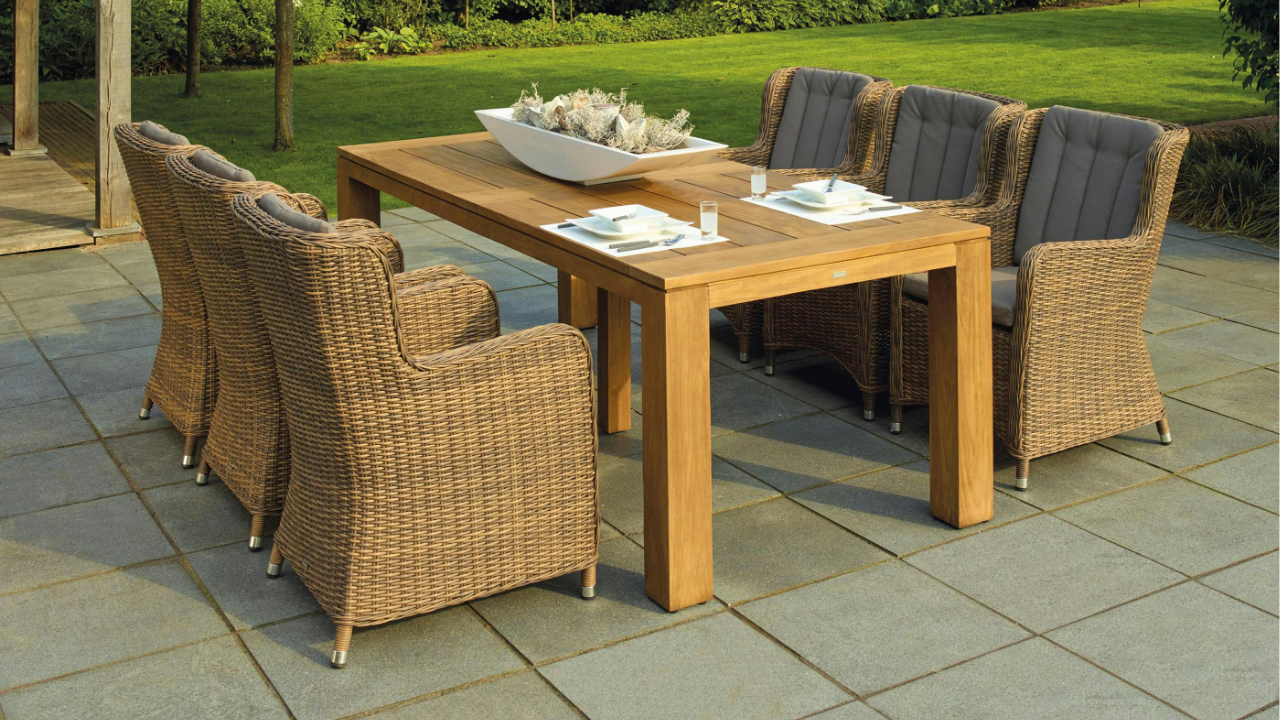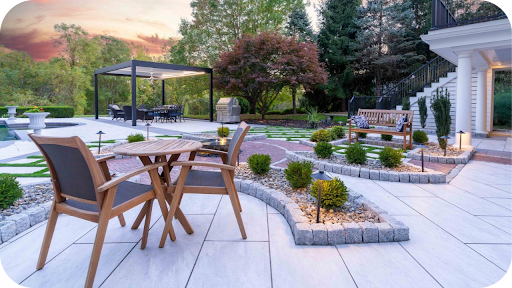
Stone wall cladding is gaining popularity among homeowners who want to enhance their interiors and exteriors with timeless style.
It offers natural texture, thermal performance, durability, and an instant lift in visual appeal. From rustic charm to modern elegance, cladding suits a range of architectural styles and applications.
This article will walk you through everything you need to know. You’ll learn about different cladding types, the best stone materials to use, how to select the right option for your home, and key tips for installation and ongoing care.
What Is Stone Wall Cladding?
Stone wall cladding refers to thin layers of natural stone applied to walls to enhance appearance and provide surface protection. It offers the look of solid stone without the weight.
Common cladding styles include ledge stone for linear definition, free form for a rustic finish, and Z panels for seamless, pre-assembled installation across interior and exterior surfaces.
Key Factors to Consider When Selecting Stone Wall Cladding

Making the right choice starts with knowing what to look for. These key considerations will help you select stone cladding that fits your home’s style, function, and long-term needs.
1. Match Your Home’s Architectural Style
Select cladding that reflects your home’s character. Modern homes suit clean-lined or honed finishes, while heritage or rustic styles pair beautifully with textured, irregular, or dry-stacked formats that highlight natural charm and craftsmanship.
3. Consider Colour and Finish
Choose tones that work with your surroundings, such as soft greys, earthy browns, or crisp whites. Finishes like honed, split-face, or tumbled each create a unique visual impact and texture.
4. Evaluate the Installation Area
Check if the space is internal or external, exposed to moisture, or on a load-bearing wall. These factors affect which stone type and thickness will perform best and stay secure over time.
5. Factor in Maintenance and Cleaning
Smooth, sealed surfaces are easier to clean and less likely to collect dirt. Split or textured finishes may need more care. Choose a finish that balances visual appeal with how much upkeep you prefer.
6. Set a Realistic Budget
Consider the full cost including the stone, adhesives, sealers, and professional labour. While some materials cost more upfront, they may save on maintenance and add lasting value to your home.
Types of Stone Wall Cladding

The way stone is applied can dramatically shape the final look. These are the most popular cladding types, each offering a distinct texture, finish, and visual style for different home parts.
1. Natural Split-Face Stone
Split-face stone features a rugged, uneven surface that highlights the raw beauty of natural stone. Commonly used for feature walls, it adds strong visual texture and works well both inside and outside the home.
2. Stone Veneer Panels
These lightweight panels mimic the look of full stone but are easier to install. Ideal for interiors or decorative surfaces, they come in various formats and are often backed with mesh for convenience.
3. Stacked Stone
Stacked stone offers a clean, modern appearance with tight horizontal lines. It is commonly used for fireplaces, facades, and accent walls where symmetry, linear flow, and a contemporary aesthetic are desired.
4. Dry Stone Cladding
Dry stone cladding is laid without visible mortar, giving it a rustic, traditional look. It works beautifully in garden walls, outdoor settings, and landscaping designs that call for a natural, handcrafted appearance.
5. Random Ashlar
This type blends stone blocks of different sizes and shapes in a non-uniform layout. It creates a traditional, heritage feel and is ideal for larger feature walls, retaining structures, or country-style homes.
Popular Stone Materials for Wall Cladding

The right material brings both beauty and durability to your cladding. These popular natural stones offer a range of colours, textures, and finishes suitable for different architectural styles and functions.
- Granite: Granite is a strong and weather-resistant stone ideal for exterior cladding and feature walls. Its bold speckled look, wide colour range, and durability make it perfect for high-traffic or high-impact zones.
- Limestone: Limestone offers soft, earthy tones and a naturally smooth finish. It’s well suited to both contemporary and traditional homes and is available in honed, sawn, or split-face finishes for added versatility.
- Sandstone: Sandstone is a textured, rustic material that blends beautifully into gardens, retaining walls, or transitional spaces. Its warm palette ranges from beige to burnt orange and works well with natural surroundings.
- Quartzite: Quartzite is a shimmering, durable stone that performs well in both indoor and outdoor cladding. It resists wear, offers subtle colour variation, and is available in natural split or honed finishes.
- Travertine: Travertine is a warm-toned stone with soft surface textures and naturally occurring pits. Ideal for relaxed, Mediterranean-style walls, it’s available in tumbled, brushed, or honed finishes for different visual effects.
Where to Use Stone Wall Cladding in the Home

Stone wall cladding adds impact wherever it’s used. Here are some of the best spaces in and around the home to highlight its texture, warmth, and timeless appeal.
1. Exterior Facades
Stone cladding on exterior walls enhances kerb appeal and creates a lasting first impression. It adds texture, depth, and durability to the home’s exterior while complementing both modern and traditional architecture.
2. Entryways and Feature Walls
Entry points and hallway feature walls gain instant character with stone cladding. It introduces warmth and elegance, creating a strong visual statement as soon as guests step inside your home.
3. Living Rooms and Fireplaces
Cladding around fireplaces or feature walls adds cosiness and natural texture to living spaces. It’s perfect for anchoring a room and works equally well with rustic, classic, or contemporary styles.
4. Kitchens and Splashbacks
Stone cladding in kitchens provides a natural finish behind cooktops or on breakfast bars. It pairs beautifully with timber, metal, or glass and offers an organic contrast to modern cabinetry.
5. Outdoor Entertaining Areas
Use stone on garden walls, BBQ surrounds, or alfresco seating zones. It adds charm, structure, and continuity between built and natural elements, making your outdoor spaces feel refined and inviting.
Benefits of Stone Wall Cladding

Stone wall cladding offers more than just good looks. These key advantages make it a popular and lasting choice for homeowners looking to elevate both aesthetics and functionality.
1. Enhances Visual Appeal
Stone cladding adds natural texture, depth, and elegance to any wall. Its varied colours and patterns create visual interest, making it an ideal choice for both subtle accents and bold feature areas.
2. Resists Wear and Weather
Natural stone is built to last. It stands up to moisture, UV exposure, and daily use, making it a durable choice for both interior spaces and exterior façades in all types of climates.
3. Improves Thermal and Acoustic Comfort
Stone cladding adds a layer of insulation that helps regulate indoor temperature and reduce noise. It makes your living environment quieter, more energy-efficient, and more comfortable throughout the seasons.
4. Requires Minimal Maintenance
With proper sealing, stone cladding is easy to care for. It resists dirt and stains, needs only occasional cleaning, and maintains its natural beauty with very little ongoing effort.
5. Increases Property Value
Stone cladding signals quality and timeless design. Its aesthetic and structural benefits boost buyer appeal and can significantly improve your home’s resale value in both new builds and renovations.
Maintenance Tips for Stone Wall Cladding

With just a little care, your stone cladding will stay looking beautiful for years. Follow these simple maintenance practices to preserve its strength, colour, and finish.
- Clean regularly with pH-neutral products: Use a soft brush and mild cleaner to remove dirt and debris. Avoid harsh chemicals, which can erode the surface or strip protective sealants from more porous stone types.
- Reseal stone when needed: Some stones like limestone, travertine, or sandstone benefit from resealing every two to three years. This protects against moisture, mould, and stains while preserving the stone’s natural colour and texture.
- Check for cracks or damage early: Inspect your cladding regularly for signs of wear. Promptly repair any chips, loose pieces, or discolouration to prevent water ingress and further deterioration over time.
- Maintain drainage and runoff paths: Ensure water doesn’t pool behind or around the cladding. Keep gutters clear, check fall direction, and maintain weep holes where used to prevent long-term structural issues.
- Avoid high-pressure cleaning: Unless the stone is suited to it, steer clear of pressure washers. Excessive force can damage edges, dislodge mortar, or cause uneven fading on softer or honed finishes.
Conclusion
Stone wall cladding adds lasting beauty, texture, and value to any home. With the right style, material, and installation, it becomes a standout feature inside or out. Choose carefully, maintain it well, and enjoy its timeless appeal.
Need guidance? Contact Splendour in Stone for expert advice and premium stone cladding tailored to your space.
More To Explore

Top 10 DIY Projects to Upgrade Your Backyard
More homeowners are paying attention to their outdoor spaces as backyards become important living areas. This shift highlights a desire for comfort, better use of

What Are the Best Permeable Pavers for Drainage?
Heavy rain can quickly turn a beautiful outdoor space into a frustrating pool of standing water. Many homes face similar drainage issues, especially in high-traffic


